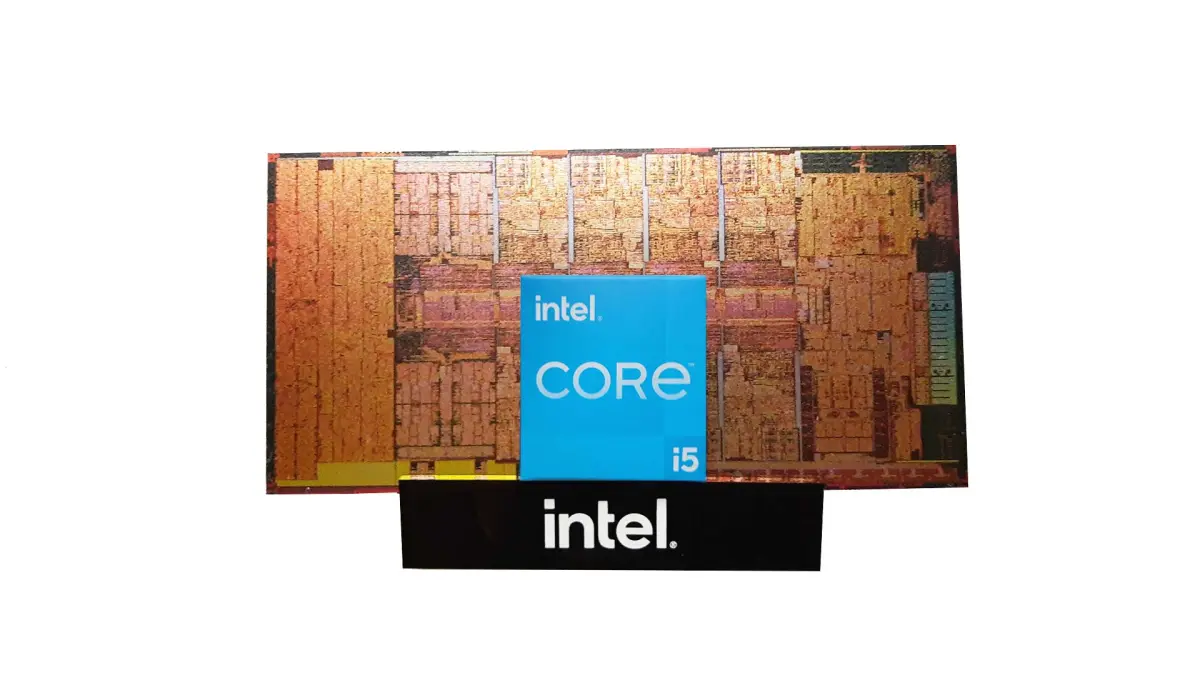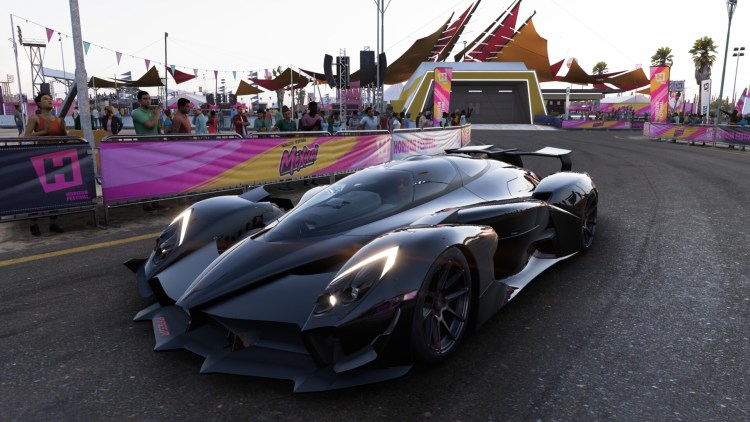Gaming performance and multi-tasking
Those interested in i5 model CPUs typically must accept that the better value comes at the cost of lower framerates. This is why we’re pleased to say that the 12600K feels anything but middling. Intel has really raised the bar here by offering a cheap CPU that can output high framerates to the point that previous generation Intel flagships should be jealous. This is not to say that you should go out and replace your older eight-core Intel CPU, but the 12th-generation i5 can now effectively compete in gaming with not so old R7s, i7s, and even i9s while handling background tasks better.
The 12600K features six P-cores just like the previous generation i5, but the four additional E-cores are equally important for freeing up performance. The result is a CPU that can competently handle any game you throw at it. We particularly noted better 1% and 0.1% lows compared to our previous 11700K testing. At the same time though, it’s not enough to negate the lack of two additional P-cores in certain games like Cyberpunk 2077 where there was a massive discrepancy between the i5 and i9. This is just a niche example for the time being, as most of today’s games perform well enough on just six cores. However, future games that are designed with higher core counts in mind will begin to widen the gap between the 12600K and processors with more “P-cores.”
We’re still in the process of building out a proper comparison suite against other CPUs, so our data is limited in this review. As an additional note, we had an MSI RTX 3070 Gaming X Trio for previous testing, but we were limited to an ASUS RTX 3060 Ti TUF OC for this review. Despite this, the 12600K managed to achieve similar or better performance in certain aspects of our benchmark tests with the weaker GPU. That fact alone says a lot.
For now, we’ve included the following benchmarks with average framerates, 1% low averages. and 0.1% low averages to show how the 12600K performs in popular games. We’ve also included benchmarks while multi-tasking, test conditions for each game, and our concluding thoughts on the gaming performance of the 12600K.
Gaming performance
Here’s a look at the gaming performance of the 12600K across various popular titles. We only test in 1080p, because it allows for higher maximum framerates by reducing the chances for the GPU to bottleneck and interfere with the data.
Just like what we found with the Alder Lake i9, high refresh gaming is a breeze for this i5 CPU as well. The RTX 3060 Ti was still the bottleneck in every scenario, which should come as no surprise. However, the i5 lacked some of the headroom provided by the i9 model. In Cyberpunk 2077, total CPU usage on the i5 spiked well into the 80% range, though average usage was in the 70% range. This shows the CPU still has some headroom to keep up with more powerful GPUs, and it should be capable of providing 144+ fps even in the most demanding games.
Expectedly, the i5 just ran away with huge fps numbers in the lightweight games. The CPU is clearly an adequate solution, even for esports enthusiasts, and proves an i5 is now all gamers really need to have a good experience without breaking the bank. It will clearly take a very high end graphics card to expose the framerate limitations of this CPU, making it the clear value choice for new builds. And if you start turning up 3D settings instead of reaching for ludicrously higher framerates in lightweight titles, the 12600K will keep you happy for years to come.
When it comes to the 0.1% and 1% lows, we noticed that the 12600K offered improved performance over previous generations of Intel CPUs in most scenarios. We believe this is due to a combination of the improvements this generation, but also largely thanks to the E-cores that are able to handle various backgrounds tasks to keep the P-cores freed up for gaming. However, we can’t confirm how exactly this works until we do more testing on how the Thread Director manages other applications like the OS, gameplay capture programs like OBS Studio, and more. Check back for follow-up content specifically on that. For now, we can take a look at the game benchmarks with multi-tasking thrown into the equation.
Gaming while multi-tasking
These benchmarks are derived from more extreme workload scenarios than most will likely run, but it should give a good idea of how much you can really do with Intel’s mainline gaming CPU.
Gameplay in every title remained reasonably smooth even under these conditions.
We ran these benchmarks based on the same multi-tasking conditions we previously tested with for power consumption and temperatures. The 12600K did take a noticeable hit in framerates, but managed to maintain overall healthy average framerates. The things players will notice most is worse 0.1% and 1% lows, which will result in games feeling a little less smooth and responsive.
Still, these results are all easily playable and seem like a reasonable tradeoff for the cost of this CPU. Considering how we used to need dedicated streaming PCs and/or capture cards just a few short years ago to game while simultaneously handling high quality gameplay capture and other processes without introducing massive stutters, the i5-12600K is a budget gamer’s dream.
The last several generations of CPUs from both AMD and Intel have made huge strides in multitasking performance, and Alder Lake certainly looks like the culmination of years of development from Intel. With 10 total cores, gamers can now do a lot more without an expensive setup. Just bear in mind that you’ll be using the 12600K to its full potential when doing these types of multitasking activities with uncapped framerates. If these number aren’t nearly high enough, well, there’s the 12-core i7 and the beefy 16-core i9 if you’re determined to go with Intel.
Game testing conditions
We’ve included all of the settings we tested with for additional context and for those who wish to reproduce our results. All games were tested in 1080p with uncapped framerates. Most settings are on low unless there’s a valid reason for turning the settings up such as player render distances in battle royales. We use the following settings to show how the CPU performs with minimal GPU bottlenecks, but make some exceptions which are noted on a per game basis. Major settings are as listed.
*Note: We did notice a few small inconsistencies in framerate results while gathering and comparing data between the i5 and i9 models. Specifically, the i5 actually exhibited higher overall framerates in Halo 3 than the i9. This is simply a matter of gameplay inconsistencies that come from manual benchmarks versus scripted benchmarks, but we choose to provide manual benchmarks so that players can see how the CPU performs in popular games versus only those that supported scripted benchmarks. We do still test some scripted benchmarks to provide comparative data for validation versus other independent reviews.
Halo: The Master Chief Collection – Halo 3
45 minutes of gameplay data captured. Tested one 8v8 matchmaking game, one 4v4 matchmaking arena game, and the Tsavo Highway campaign level back to back and averaged in-game framerate of the three scenarios. Original graphics applied. Steam version.
Borderlands 3
In-game benchmark tool was used for five runs that were then averaged. Low graphics preset, performed on DX11 API (stutters noticeable with DX12 on this system). Steam version.
Apex Legends
20 minutes of gameplay data captured during “Escape” season on World’s Edge map. Low settings, VRAM budget at Very Low. Steam version.
Fortnite
20 minutes of gameplay data captured. Chapter 3 Season 1 map. Battle Lab was used and included driving, running, building, fighting bots.
Low settings, max render distance, DLSS off, DX11 API, multi-threaded rendering on. DLSS is disabled in this title because of the significant ghosting that occurs. This, in combination with Fortnite being an easy to run game, means there’s a lower likelihood of users applying DLSS.
Cyberpunk 2077
20 minutes of gameplay data captured. Japantown location was selected and included walkthrough of Cherry Blossom market, Jig-Jig street, waterfront, streets, sporadic firefights, and driving on highways around the city. Low settings, DLSS Balanced on. GOG version.
Grand Theft Auto V
In-game benchmark tool was used and five back-to-back runs were averaged. Low/normal settings were applied, performed on DX11 API. Epic Games Store version.
*As a note about this game, we’re considering removing it or limiting the maximum framerate in future tests due to stutters introduced above ~155 fps. These occurrences skew data, which means it may be more beneficial to focus on testing 1% and 0.1% lows on future hardware as opposed to maximum framerates. The 12600K handled this game fine in all tests. The actual game engine is the limitation here. We continue to test this game due to its ongoing popularity.
Forza Horizon 5
Five in-game benchmark passes were averaged for our results. Preset low graphics settings were applied. We’ve also included notes on the CPU simulation data provided by the benchmark tool. Game Pass version.
Call of Duty: Warzone
25 minutes of gameplay captured on Caldera Pacific map. Low settings, multi-threaded rendering on, DLSS Balanced on, performed on DX11 API. DLSS is enabled for our testing because it doesn’t introduce noticeable artifacts in this game, which means players likely use the feature to reduce GPU bottlenecks.
*Testing suite update
Microsoft Flight Simulator
We tested this game previously in the 12900K review, but the game has since become unstable on our system and we’ve replaced it with Forza Horizon 5. We’ll look into readding Flight Simulator if possible, but it was largely GPU-limited anyways.










Published: Jan 24, 2022 07:00 pm